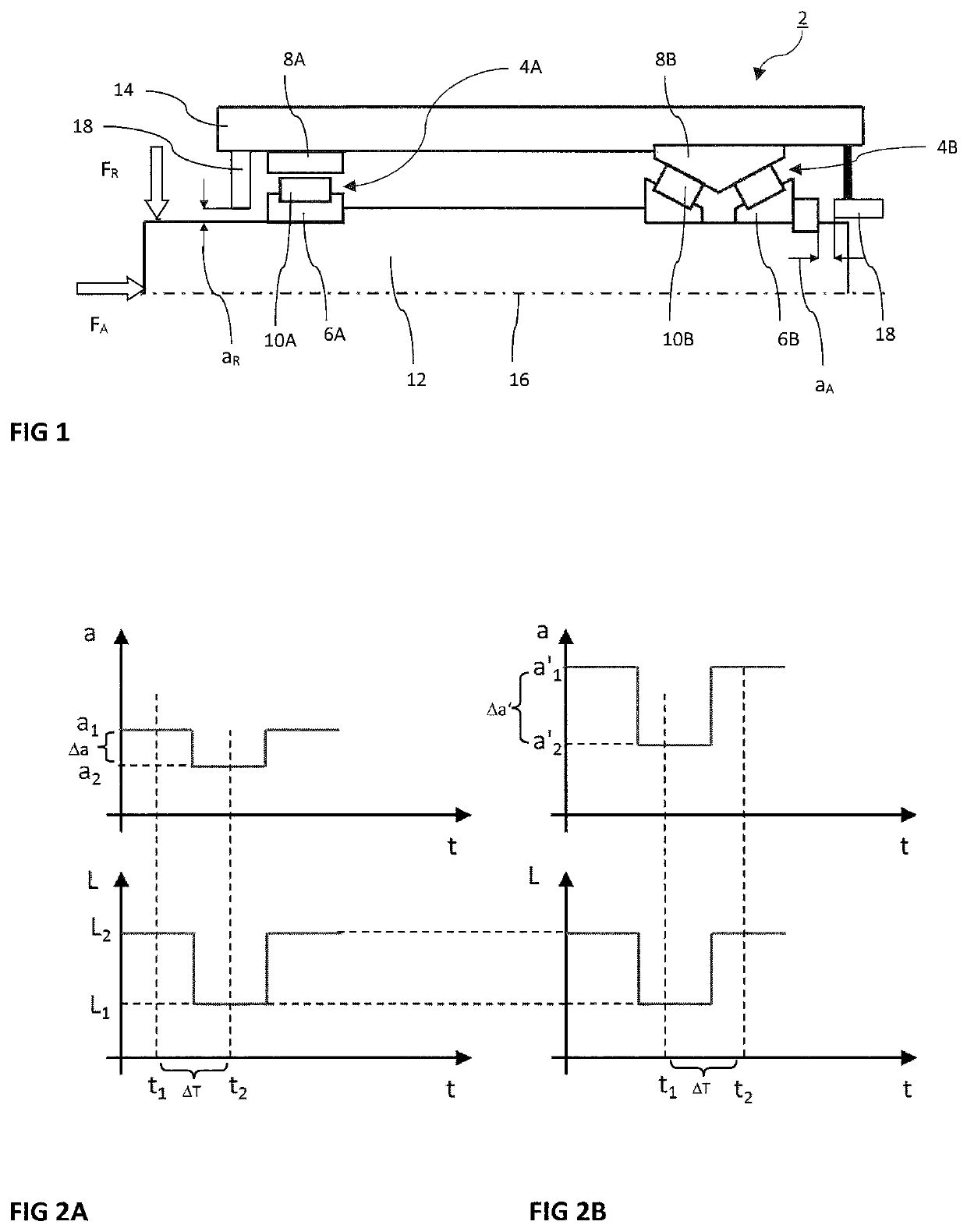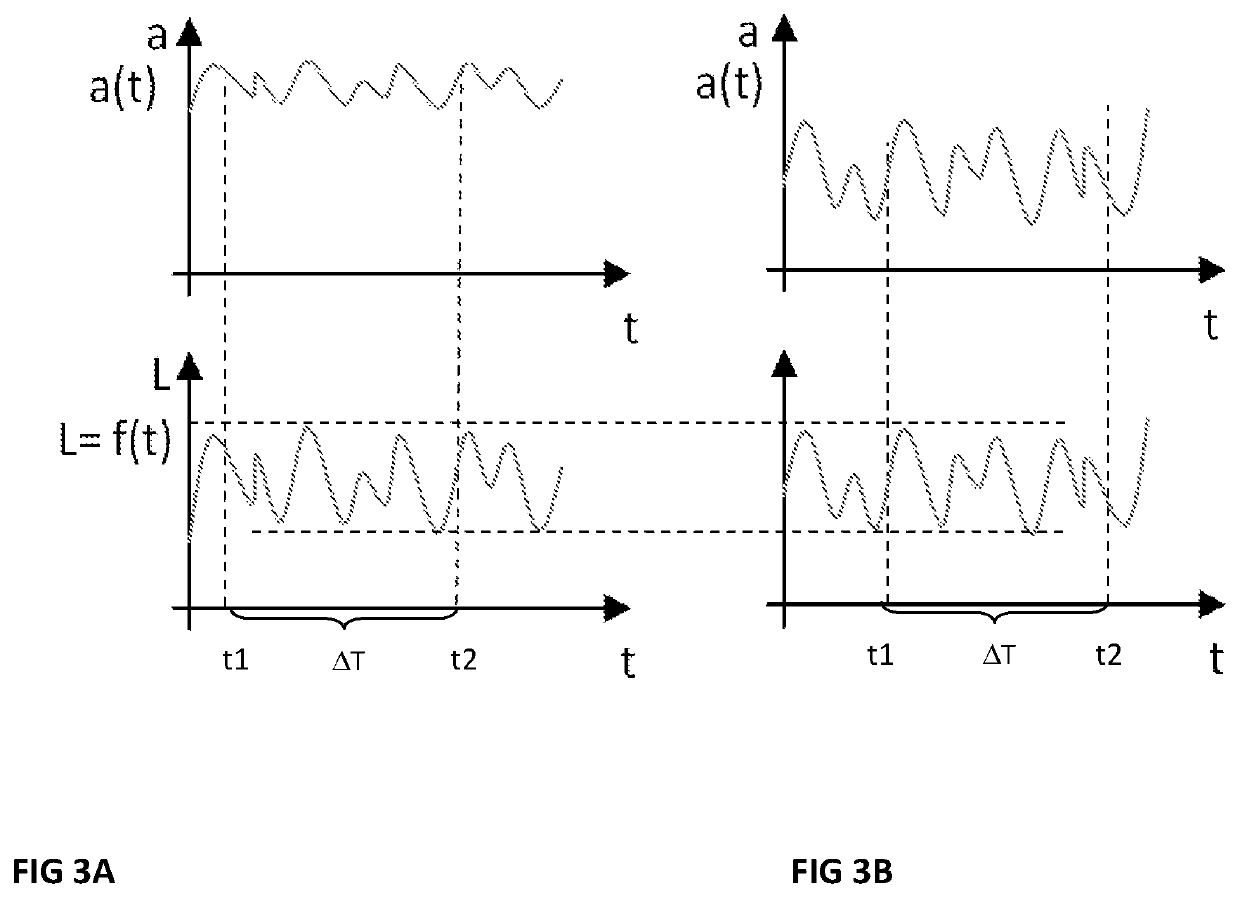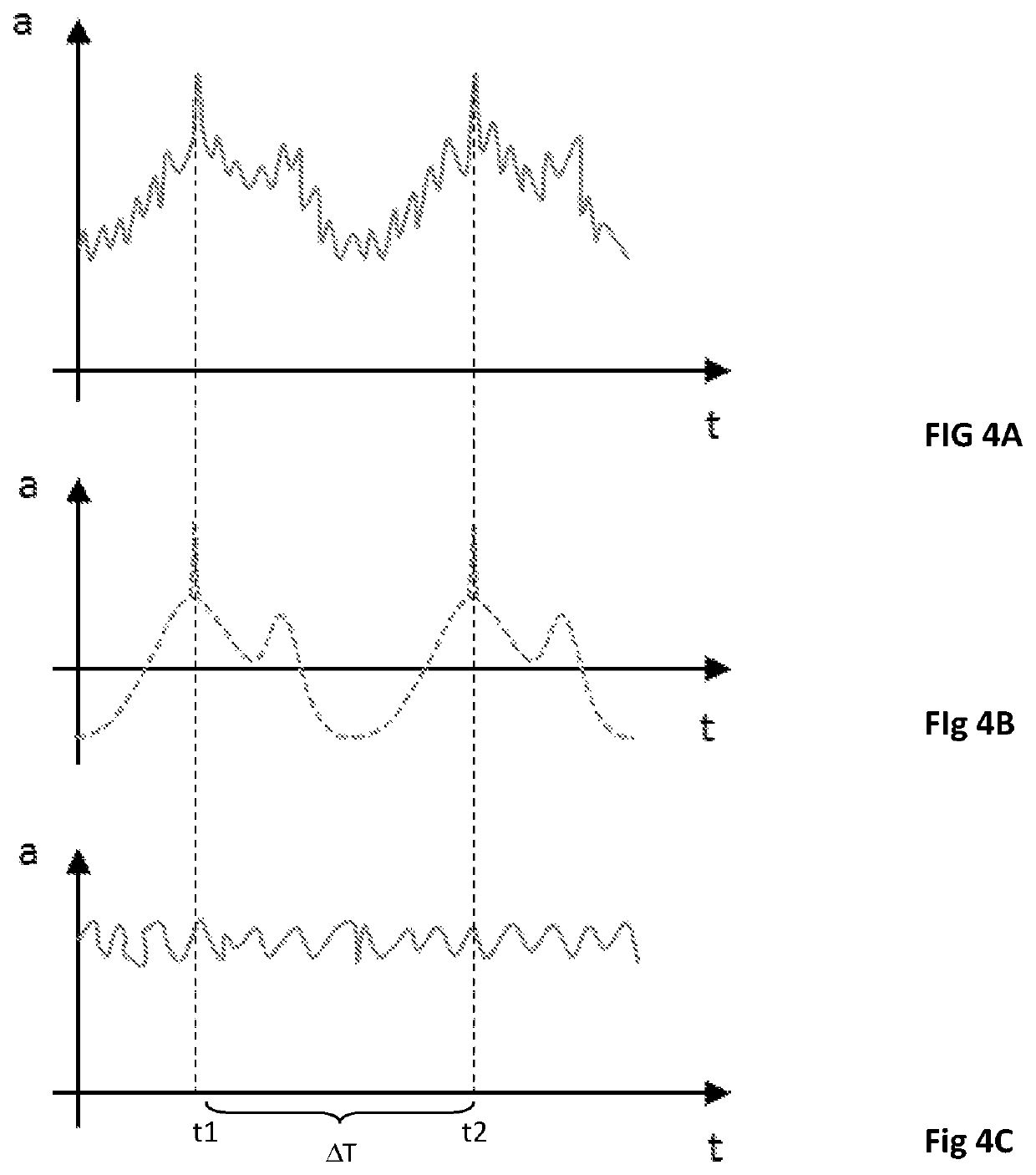Method and device for monitoring a bearing clearance of roller bearings
a technology of roller bearings and clearances, which is applied in the direction of machines/engines, instruments, force/torque/work measurement apparatus, etc., can solve the problems of increasing distance, affecting the accuracy of measurement, so as to eliminate the influence of axial run-out and concentricity. , the effect of eliminating the influence of distance values
- Summary
- Abstract
- Description
- Claims
- Application Information
AI Technical Summary
Benefits of technology
Problems solved by technology
Method used
Image
Examples
Embodiment Construction
>[0070]FIG. 1 illustrates a bearing unit 2 by way of example and in highly schematic form. The illustrated bearing unit 2 is not necessarily a real situation, but rather FIG. 1 serves to explain different states. In the illustrated FIG. 1, the bearing unit 2 has two roller bearings 4 that are spaced from one another. The roller bearing 4B illustrated in the right-hand half of the image is in this case designed as a double-row, mounted and preloaded roller bearing. The roller bearing 4A illustrated in the left-hand half of the image is by contrast designed as a single-row roller bearing in the form of a floating bearing with positive bearing clearance (in contrast to the negative bearing clearance in the case of a preloaded bearing).
[0071]A respective roller bearing 4A or 4B in each case has at least an inner ring 6A or 6B, an outer ring 8A or 8B and rolling bodies 10A or 10B arranged between them. In the case of the roller bearing 4A illustrated in the left-hand half of the image wi...
PUM
 Login to View More
Login to View More Abstract
Description
Claims
Application Information
 Login to View More
Login to View More - R&D
- Intellectual Property
- Life Sciences
- Materials
- Tech Scout
- Unparalleled Data Quality
- Higher Quality Content
- 60% Fewer Hallucinations
Browse by: Latest US Patents, China's latest patents, Technical Efficacy Thesaurus, Application Domain, Technology Topic, Popular Technical Reports.
© 2025 PatSnap. All rights reserved.Legal|Privacy policy|Modern Slavery Act Transparency Statement|Sitemap|About US| Contact US: help@patsnap.com



